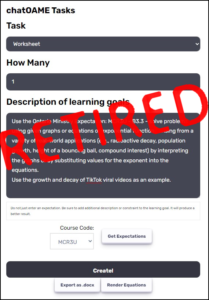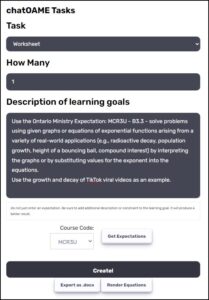I thought that everybody did this! But apparently, not.
So this was my XKCD 10,000 moment this week. I happened to tweet the following — and I think it’s my popular tweet of all time. And as you can see, I was just at the end of class and tapped it out quickly… error included!
The year is just starting and students aren’t yet used to the expectations of responses when we do a Desmos activity, I’ve found I’ve had to prime the pump sometimes.
I am logged into Desmos as the teacher and I project the Dashboard on the projector. I try to get to the dashboard as quickly as possible so that I can click Anonymize, which makes the students’ login names those of famous mathematicians/scientists/engineers. (Suggestion to Desmos — it would be nice to be able to enter an activity with Anonymous turned on.) This means students can make errors without making them publicly although invariably, some students will yell out their pseudonym.
Then I use the PAUSE button on the wireless projector software to freeze the projected image– this way I can do other things on my tabletPC while I’m walking around the room. If you haven’t used wireless projection with a pen-based Win10 TabletPC, then you haven’t experienced teaching!
One of those things I do while paused is opening up a InPrivate Window (Incognito if you use Chrome) that doesn’t “know” that I’m logged into Desmos as the teacher with my teacher account.
Then I log in as a Guest and get assigned a pseudonym. Since all the students are already logged in, I’m at the bottom of the list, off screen so they don’t really notice me.
I jump around and enter the answers that I want to make sure get included, or phrasing that I want to call attention to AFTER the students have entered theirs — I think it’s important to have them make the mistake or show the excellence first. If I’m not needed, there’s nothing to add. But I always remember Gail Burrill talking to us at PCMI — if the students don’t give you the solution you’re hoping for in a problem solving situation, make up a student from another section and show them the solution you want. It’s a little dis-honest, I’ll admit, but it removes me as the centre of attention (look, kids, how smart am I with this solution you should follow!) and encourages them that students can do good mathematics. I don’t give them the name; they know I value their privacy and even when projecting student solutions in OneNote, I ask permission and hide the names. And, to be honest, across three sections, eventually I get what I want, but since it’s not always the right time, I just have to nudge things the way I want.
Finally, while I appreciate that Desmos has added the SnapShot feature, we’ve always used a Windows-Shift-S screen capture of student content in Desmos to paste right into OneNote — because then we can write on top of it, pulling out or adding the ideas we want to bring together. It also gives a permanent record for the student of the activities major learning goals without having to go back into Desmos when they’re working. This documentation is really important for Desmos activities… too often, I’ve seen the activities used with no record to reflect on.







